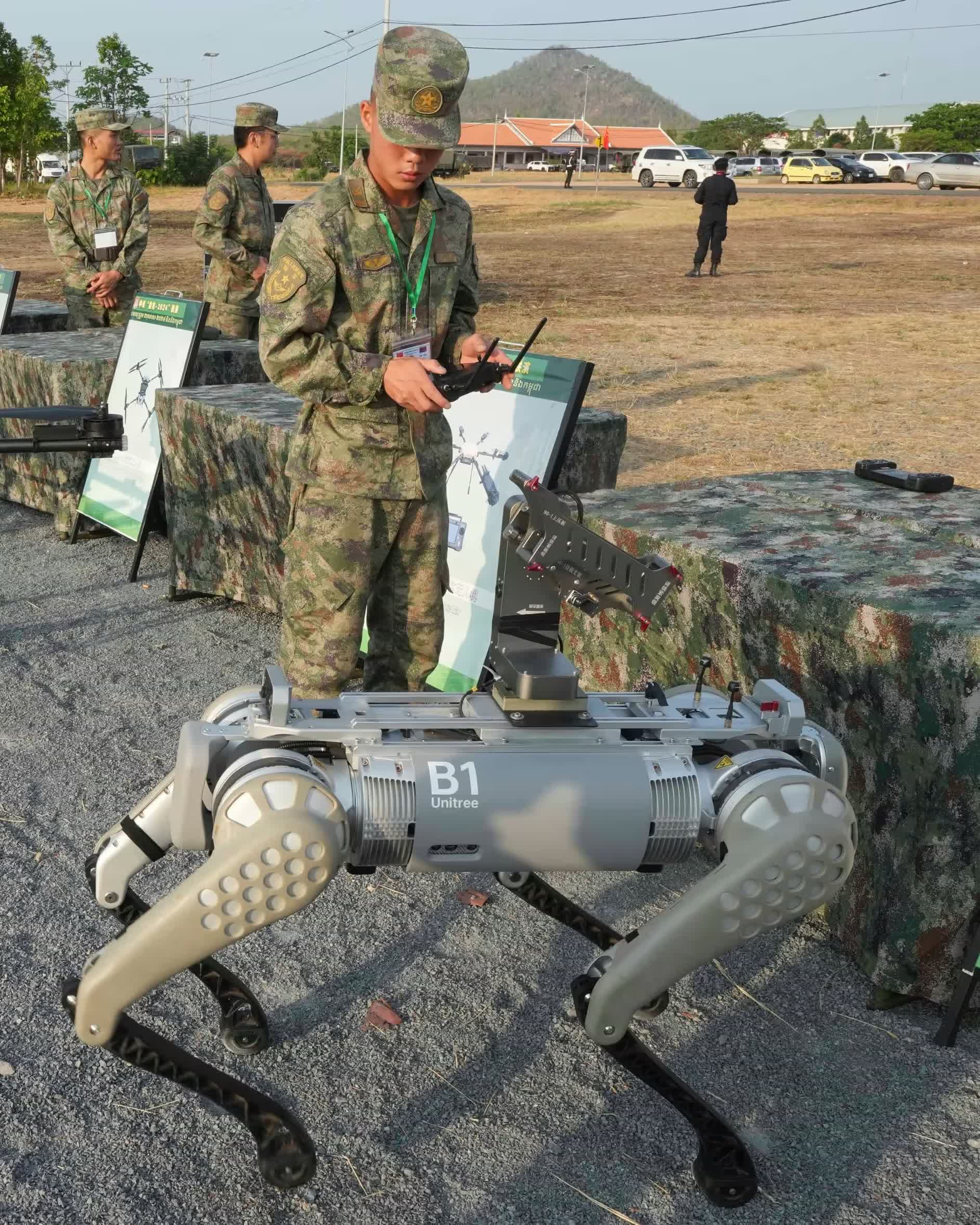Bottom line: Robotic dogs are proving useful on the battlefield, a discovery made by the US years ago and later adopted by other countries including China. The latest sighting of the Chinese army’s mechanical dog was earlier this week when state broadcaster CCTV featured the dog practicing drills with Cambodia. Their presence in joint exercises with a foreign country suggests China is comfortable with its technical maturity.
A mechanical dog with an automatic rifle on its back is becoming a recurring participant in simulated drills run by the Chinese army. Its most recent appearance was this month when the robotic dog was featured by state broadcaster CCTV participating in joint military drills with Cambodia. Human soldiers would practice dry runs for urban assaults with their gun-toting mechanical companions, backed by a quadcopter – a six-rotor aerial drone – with similar firepower.
In one drill captured in the two-minute video, the dog leads an infantry unit into a simulated building where several mock armed terrorists were hiding. The robot dog, with a QBZ-95 assault rifle on its back, spearheaded the assault and quickly cleared the area.
But this is no piece of advanced robotics developed by the Chinese army. Rather, dog and drone appear to be created with off-the-shelf technology and a standard rifle bolted on top. Unitree Robotics, the name of the Chinese manufacturer that built the dog, can be seen on its side.
This is not the first time we’re seeing a robot dog making an appearance on the world scene. The archetype was developed by Boston Dynamics and has been used in multiple scenarios including assisting in the decontaminating of Japan’s Fukushima Daiichi nuclear power plant, which was destroyed in March 2011 by an earthquake and subsequent tsunami.
According to Boston Dynamics’ founder Marc Raibert, there are about 1,500 of its mechanical dogs around the world. “But recently there’s just been a springing out of other robot companies building quite incredible robots,” he said at the AI Seoul Summit last week. “It’s very exciting to go from the research lab into commercialization.”

Nor is this the first time the Chinese have deployed robotic dogs in its military drills. CCTV video from last November showed China’s rifle-armed electronic canines in a joint exercise involving the Chinese, Cambodian, Lao, Malaysian, Thai and Vietnamese militaries held in China.
However, their increasing presence in these joint exercises suggest that the technology – even though it sprang from the commercial sector – is ready for prime time on the battlefield. “Usually, a new equipment will not be brought into a joint exercise with another country, so the robot dogs must have reached a certain level of technical maturity,” a Chinese military expert who requested anonymity told the state-run Global Times.






